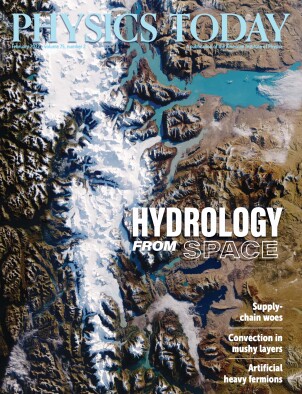Mid-Atlantic snowfall
DOI: 10.1063/PT.3.4949
When the atmosphere’s polar jet transports cold winter air from Canada toward the US East Coast, it meets warm, moisture-laden air transported north across the Atlantic Ocean by the Gulf Stream. The heat exchange brought about by the difference in temperature between the two air masses powers nor’easter winter storms. On Monday, 3 January, after an unseasonably balmy start to 2022, a nor’easter blew in to the mid-Atlantic region. This satellite photo, captured on 4 January by the Moderate Resolution Imaging Spectroradiometer aboard NASA’s Terra satellite, shows the winter storm’s snow band, which lingered over north-central Virginia and southern Maryland.

The Capital Weather Gang of the Washington Post reported that 5–10 inches of snow or more accumulated in the region, sometimes as fast as 2–3 inches per hour. The severity of the storm, they pointed out, was because of heavy, wet snow—made possible by the near-freezing temperatures—and strong gusty winds. The combination knocked down tree limbs, and many households lost power for hours or even days. Hundreds of drivers and their passengers on a stretch of Interstate 95 in northern Virginia were forced to a standstill. Some were stranded on the highway for more than 24 hours and slept in their vehicles until plowing and towing crews were able to reach them. (Image courtesy of Joshua Stevens, NASA Earth Observatory.)
More about the Authors
Alex Lopatka. alopatka@aip.org

